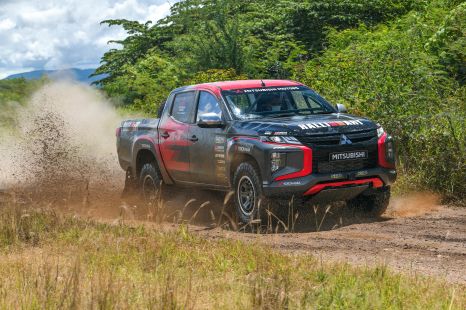

Mike Costello
2 Years Ago
View 56 images
Used from
$22,800 excl. on-roads
7.8
CarExpert Rating
Safety Rating
4
Warranty
5 years
Fuel Efficiency
7.8 - 11.4 L / 100km
The Mitsubishi Triton is one of the best-known names in utes, up there with Toyota HiLux and Ford Ranger.
It's also one of Mitsubishi Australia's best-selling cars, available in specifications to suit everyone from budget-oriented fleet buyers to adventurers who like the finer things in life.
| Configuration | Price From* |
|---|---|
| 2.4L, 6-speed manual, Double Cab Utility, Diesel, 4x4 | $42,690 |
| 2.4L, 6-speed auto, Extended Utility, Diesel, 4x4 | $43,190 |
| 2.4L, 6-speed auto, Double Cab Utility, Diesel, 4x4 | $44,940 |
| Configuration | Price From* |
|---|---|
| 2.4L, 6-speed manual, Double Cab Utility, Diesel, 4x4 | $47,290 |
| 2.4L, 6-speed auto, Double Cab Utility, Diesel, 4x4 | $49,540 |
| Configuration | Price From* |
|---|---|
| 2.4L, 6-speed auto, Double Cab Utility, Diesel, 4x4 | $55,690 |
| Configuration | Price From* |
|---|---|
| 2.4L, 6-speed auto, Double Cab Utility, Diesel, RWD | $41,740 |
| 2.4L, 6-speed auto, Double Cab Utility, Diesel, 4x4 | $45,940 |
See our comprehensive details for the Mitsubishi Triton
Unbraked towing capacity is 750kg across the entire range, while braked varies. It’s 1800kg in the petrol GLX, 2500kg in the diesel single cab-chassis, and 3000-3100kg across the rest of the range.
CarExpert High Resolution Photos of the Mitsubishi Triton
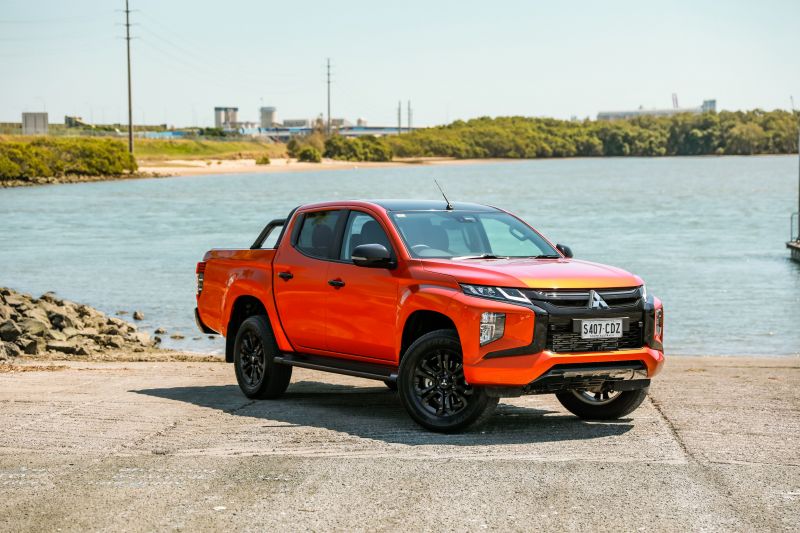
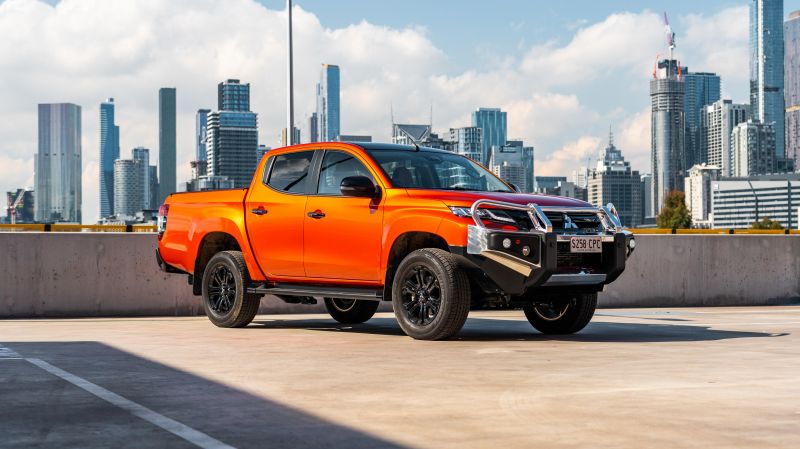
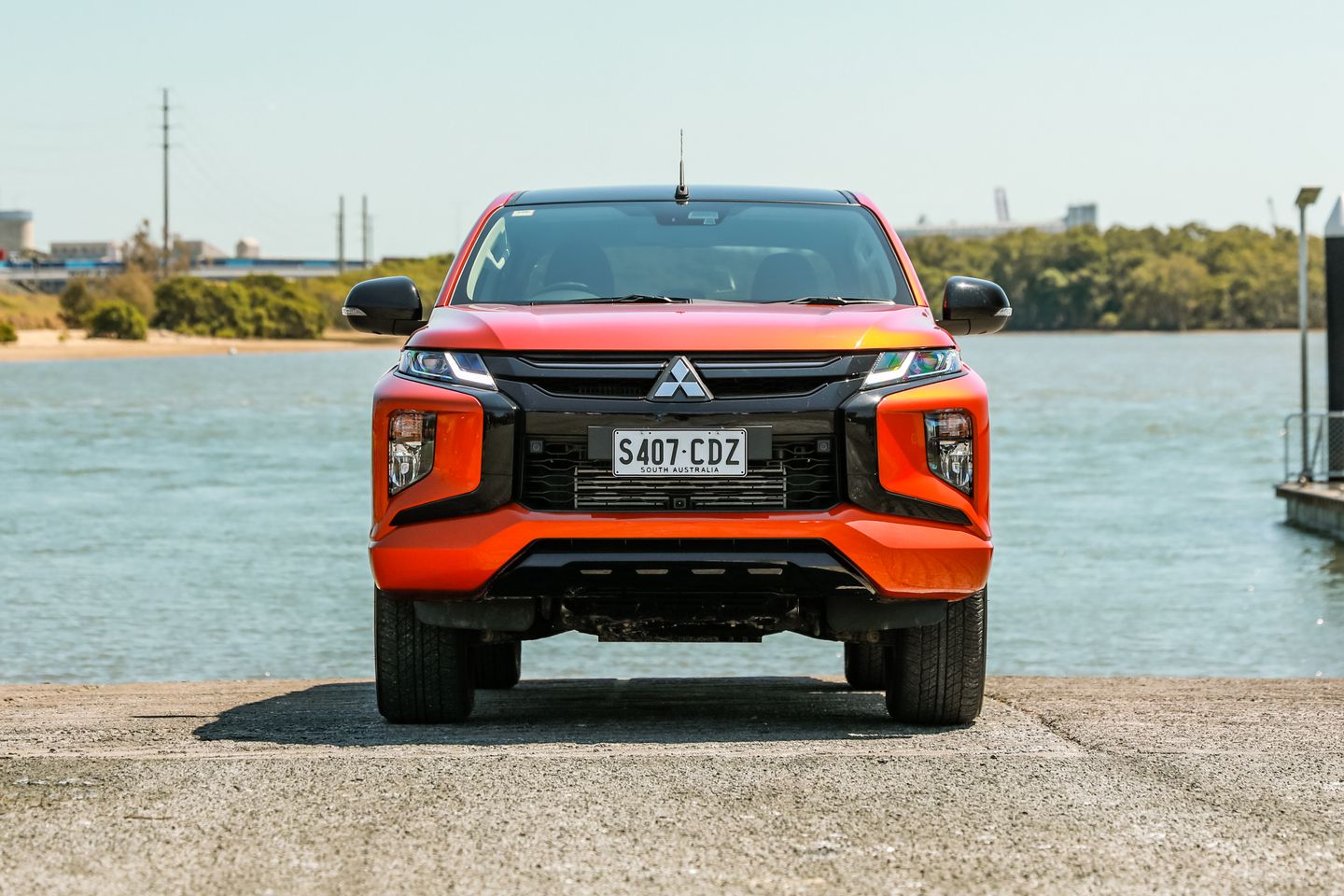
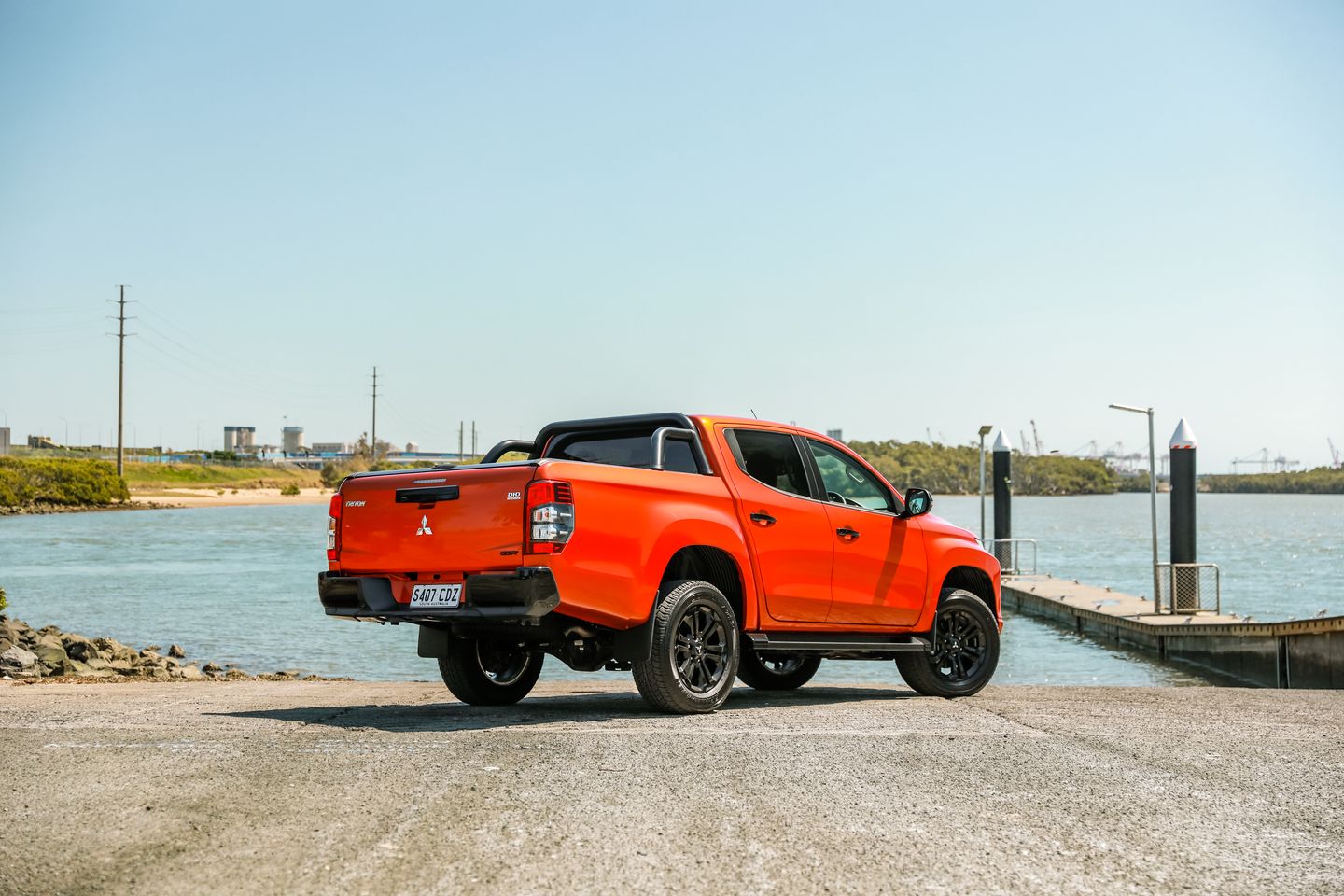
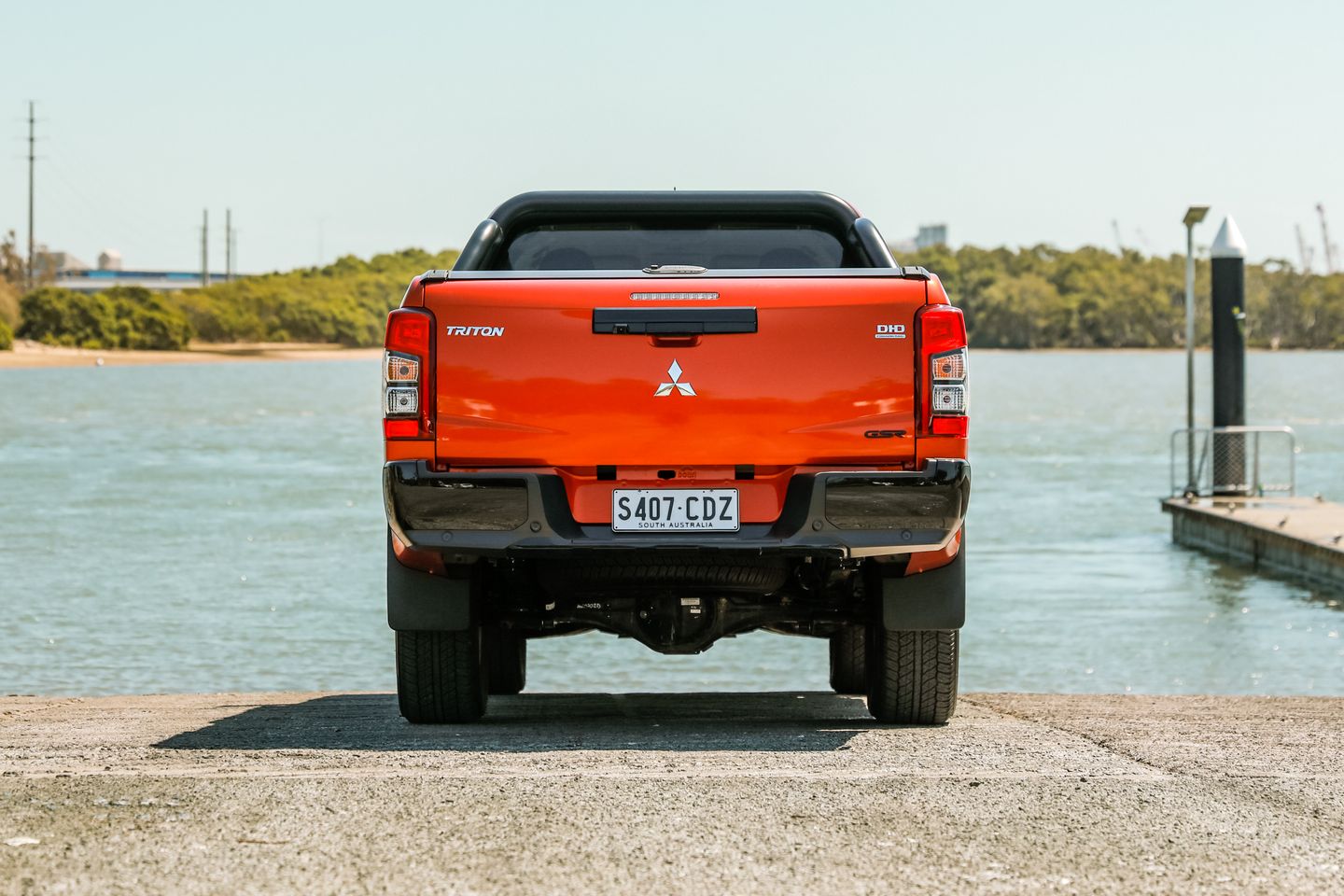
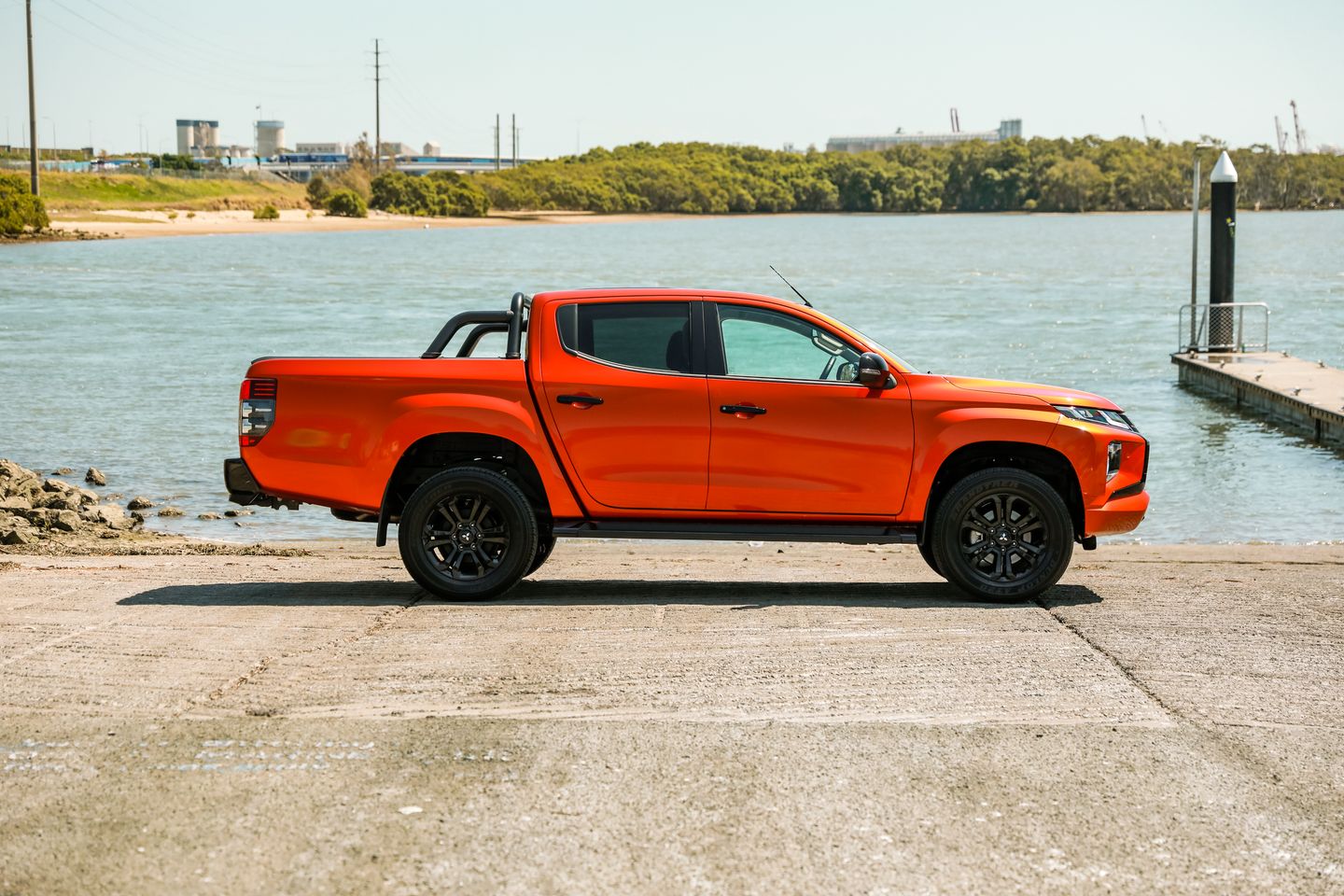
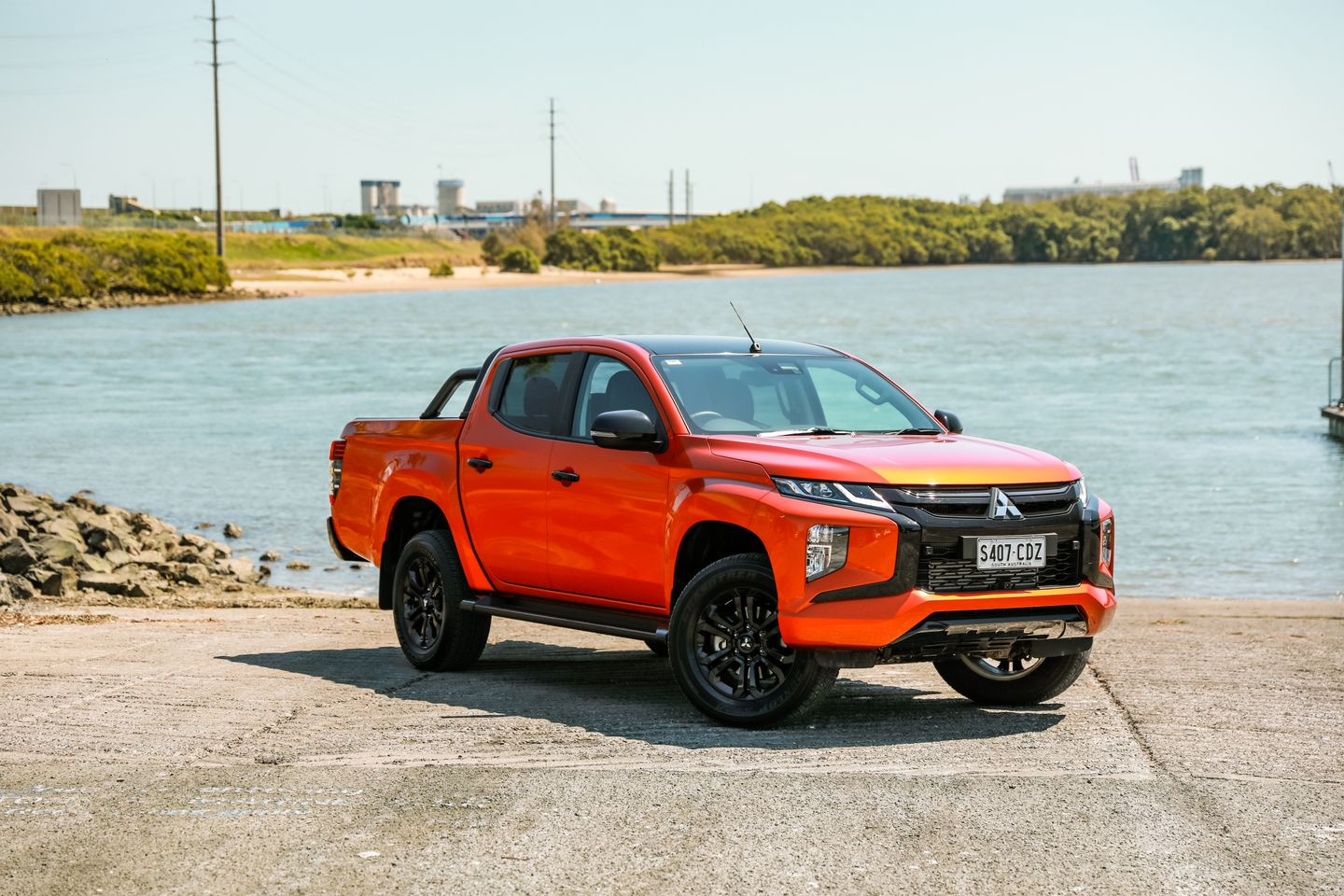
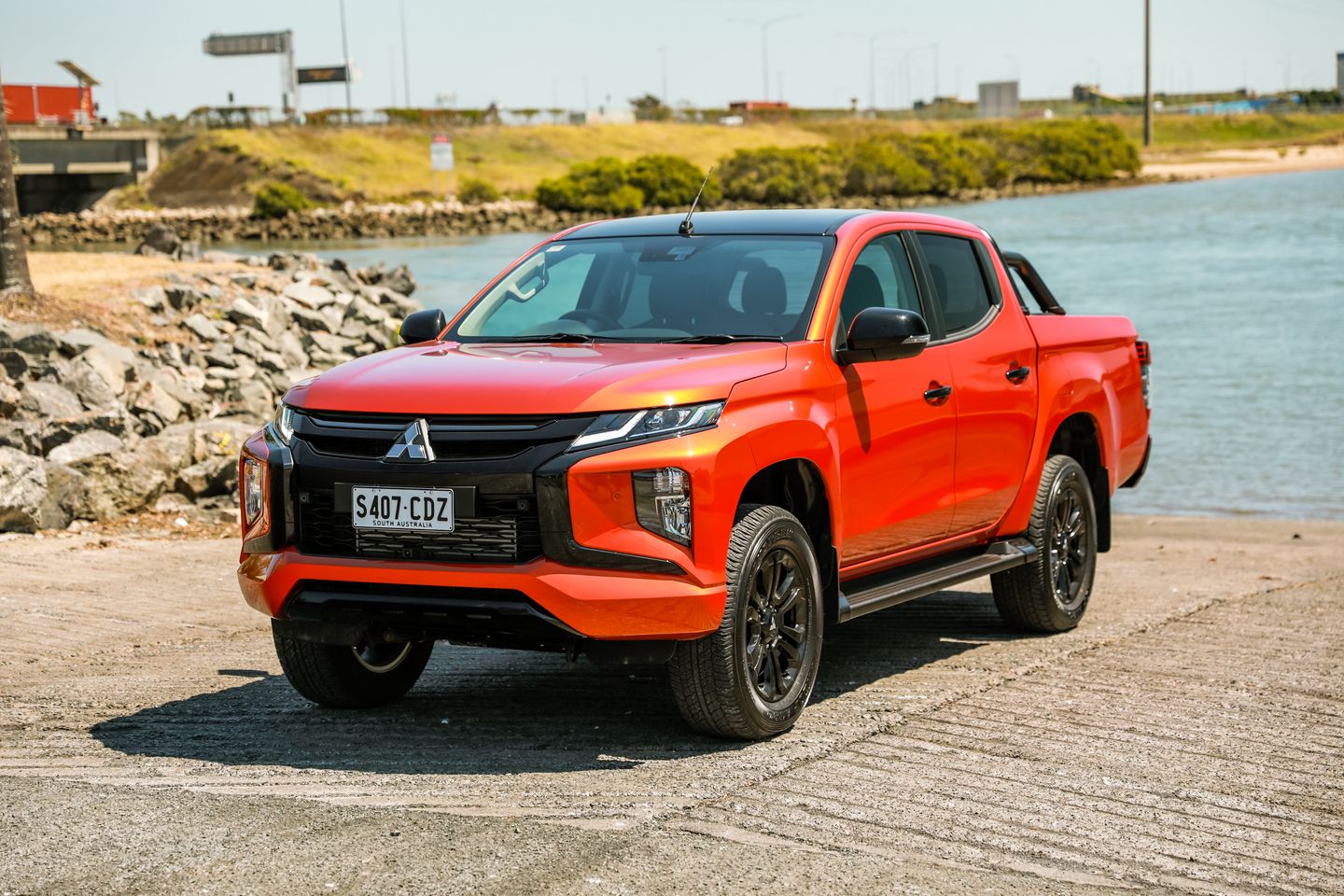
View 50 images
The Triton is lighter on flashy touches than the Ford Ranger or Toyota HiLux, but there's still plenty to separate low-end models and high-end models.
Base models ride on 16-inch steel wheels, and feature black plastic bumpers and mirrors.
Moving through the mid-range gets you 17-inch alloy wheels, and body-coloured cladding in place of the black plastic.
At the top end of the range, the Triton GSR uses black and orange accents to stand out from the crowd.



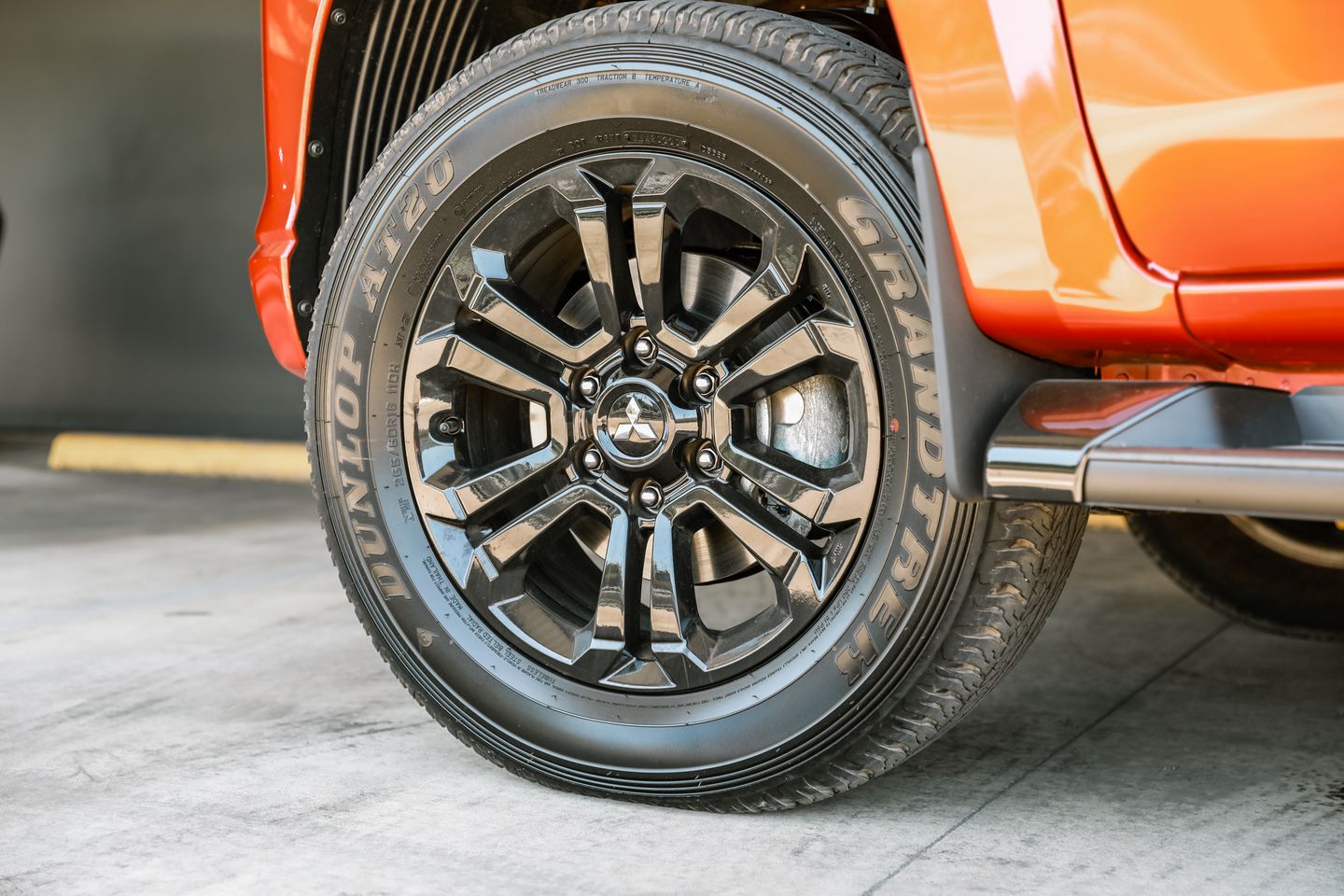
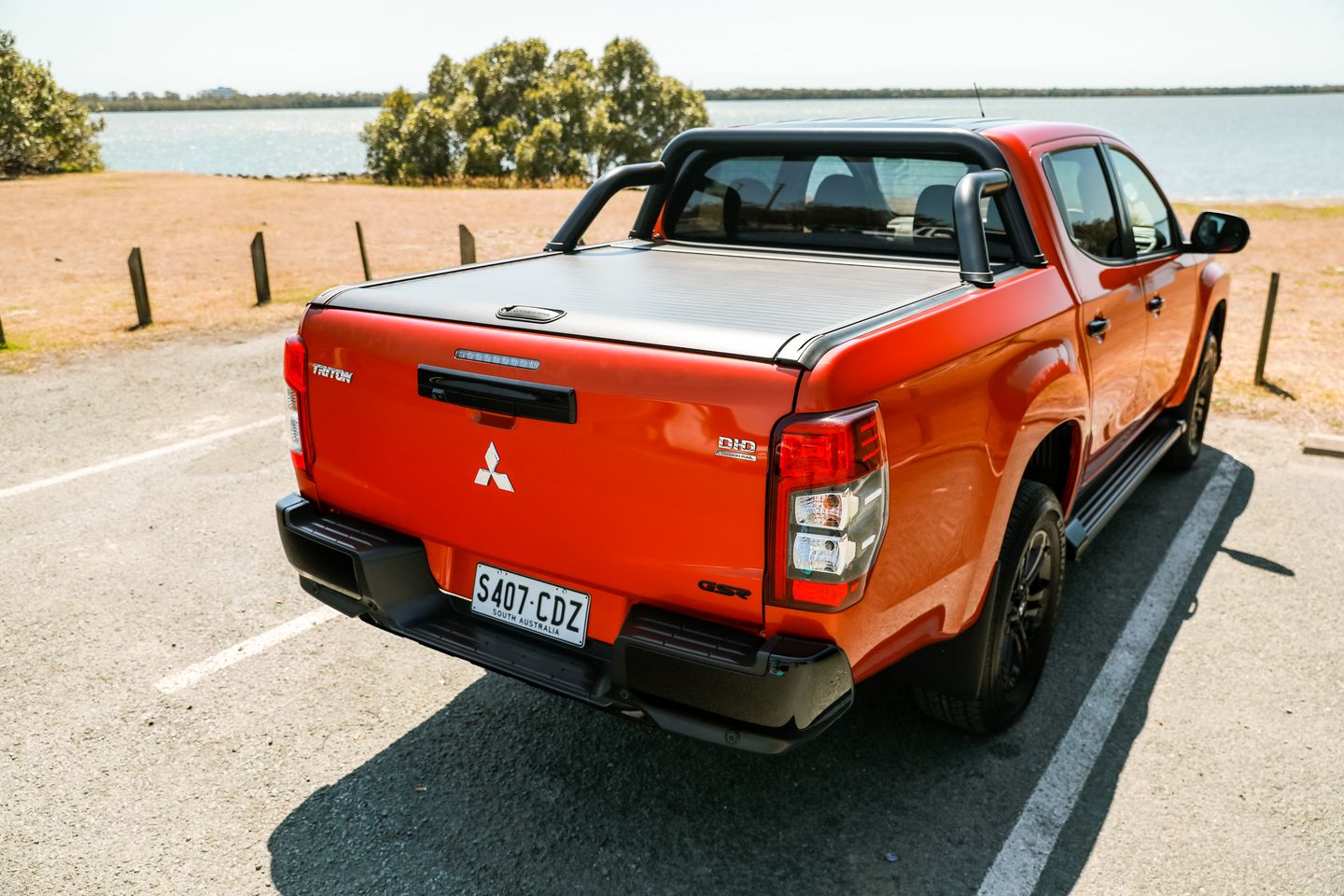

View 6 images
The Triton’s interior is no-nonsense and rather plain, but well made. The plastic panels are hard-wearing and fit together consistently, and over corrugated roads there was no rattling. There are also multiple grab handles to help you up.
Small touches to jazz up higher-specification models include padding at knee height along the transmission tunnel, a fairly upmarket steering wheel with rally car paddles mounted on the column, and silver and black plastic trim highlights.
There is telescopic adjustment for the steering wheel – unlike some ute rivals including the Ranger – yet no height adjustment for the seat. The pews themselves are trimmed in tough, yet nicely-patterned, cloth.
Storage spots include cupholders, an open cubby below the USB ports ahead of the gear shifter, a narrow but deep centre console, big doors bins with room for a one litre bottle or two, and a glovebox.
The analogue driver instruments are clear and the screen between them shows trip data and four-wheel drive system settings, but lacks a digital speedo. In states like Victoria where 104km/h can get you fined in a 100km/h zone, this feature should be mandatory.
The centre screen is basic but everything works fine. Bluetooth phone quality was sufficient for highway calls and the reversing camera has clear resolution. Some might rue the lack of satellite navigation, but the Apple CarPlay and Android Auto phone mirroring allow Google Maps or Waze.
Because the Mitsubishi Triton is a little narrow by class standards, you do sit closer to your passenger. However there’s ample headroom and shoulder room for most.
The rear seats are protected by side airbags and come with two ISOFIX and top-tether anchor points. The seat-backs fold down to reveal the spare-tyre tools.
Between each outboard rear seat is a pull-down armrest with cup holders. Other amenities include two USB points, grab handles on the B-pillars, folding overhead handles that sit out of way unlike the rigid ones in a HiLux, and air vents in the roof with controls. The reading lights are bright.
At 194cm our tester had adequate knee room and foot room behind their driving position, but less-than-perfect headroom, since the seats are mounted quite high. For most people they’ll be fine.
There’s nothing too showy about the Triton’s cabin, except the Lancer Evo paddle shifters on the steering column, but it feels hard-wearing, the ergonomics are sound, and the infotainment won’t date quickly. It’s also suitable enough as a second family car.

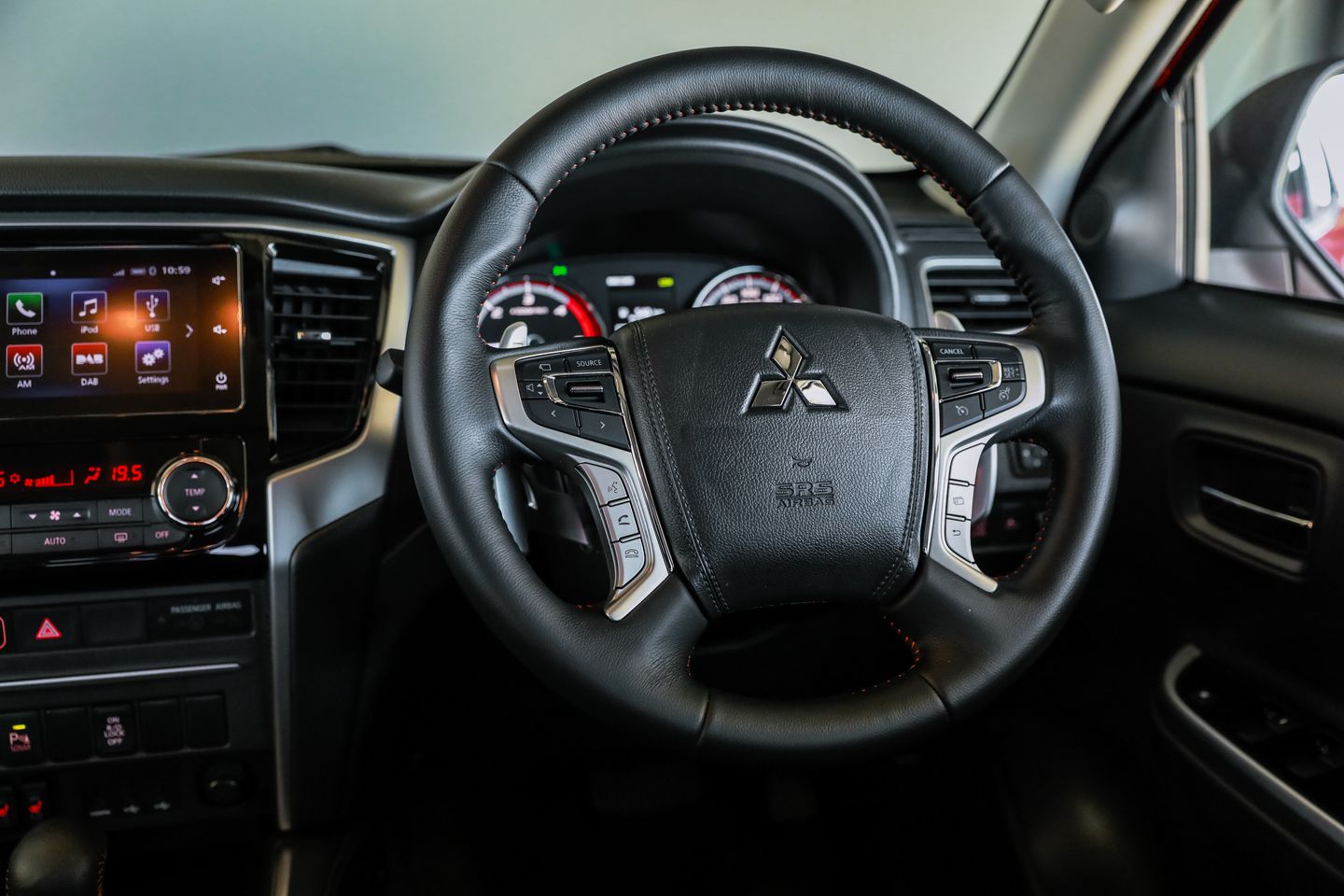
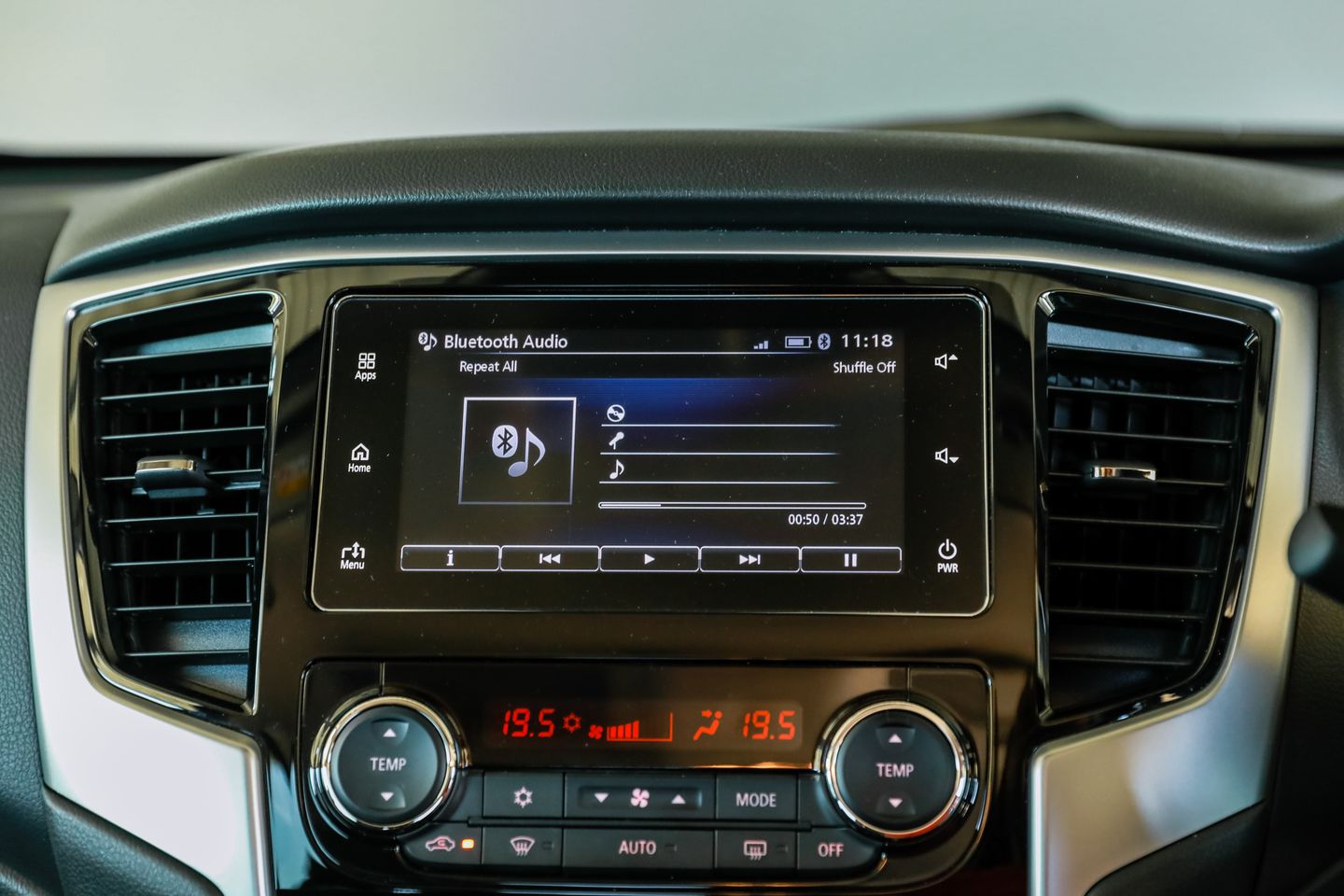
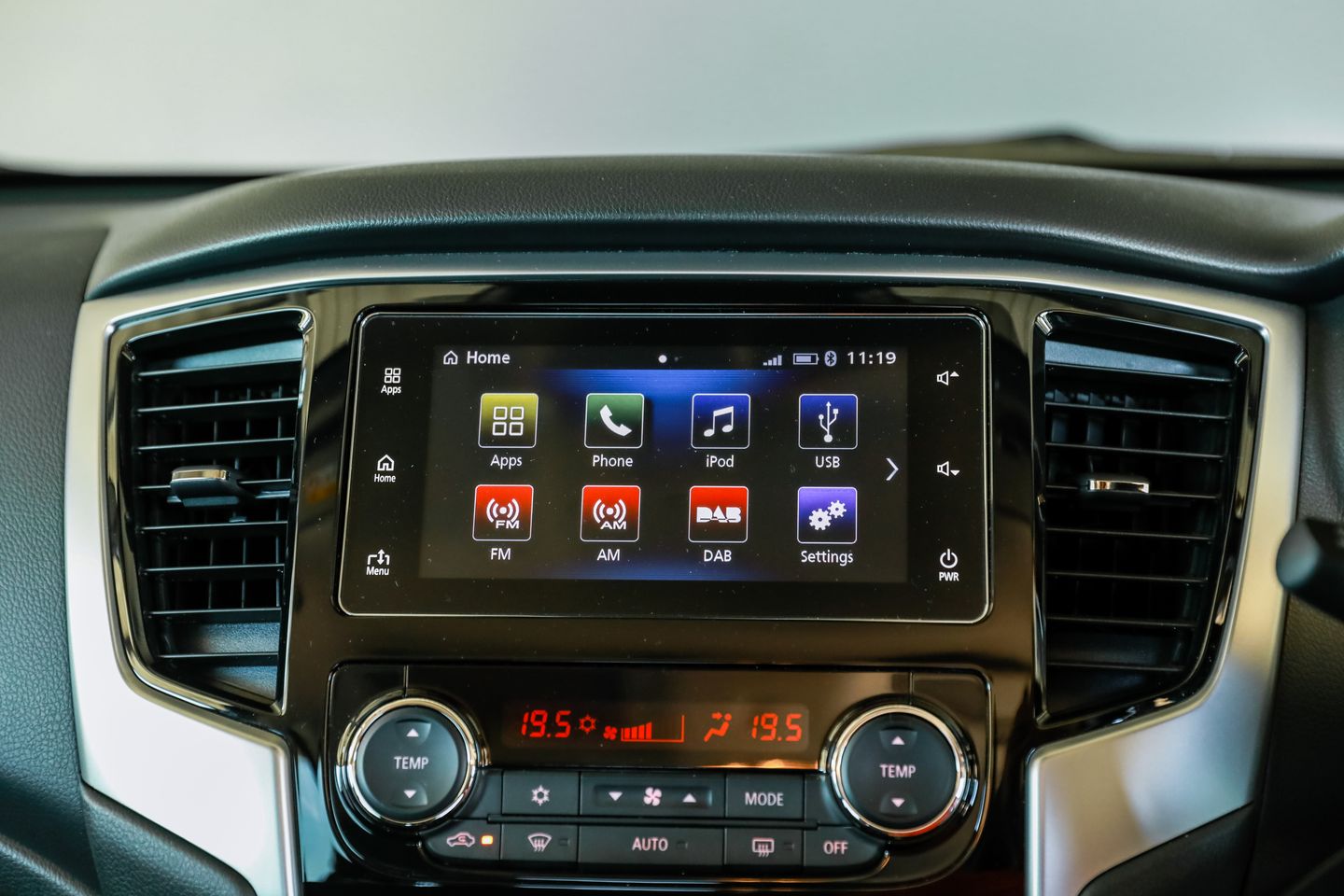
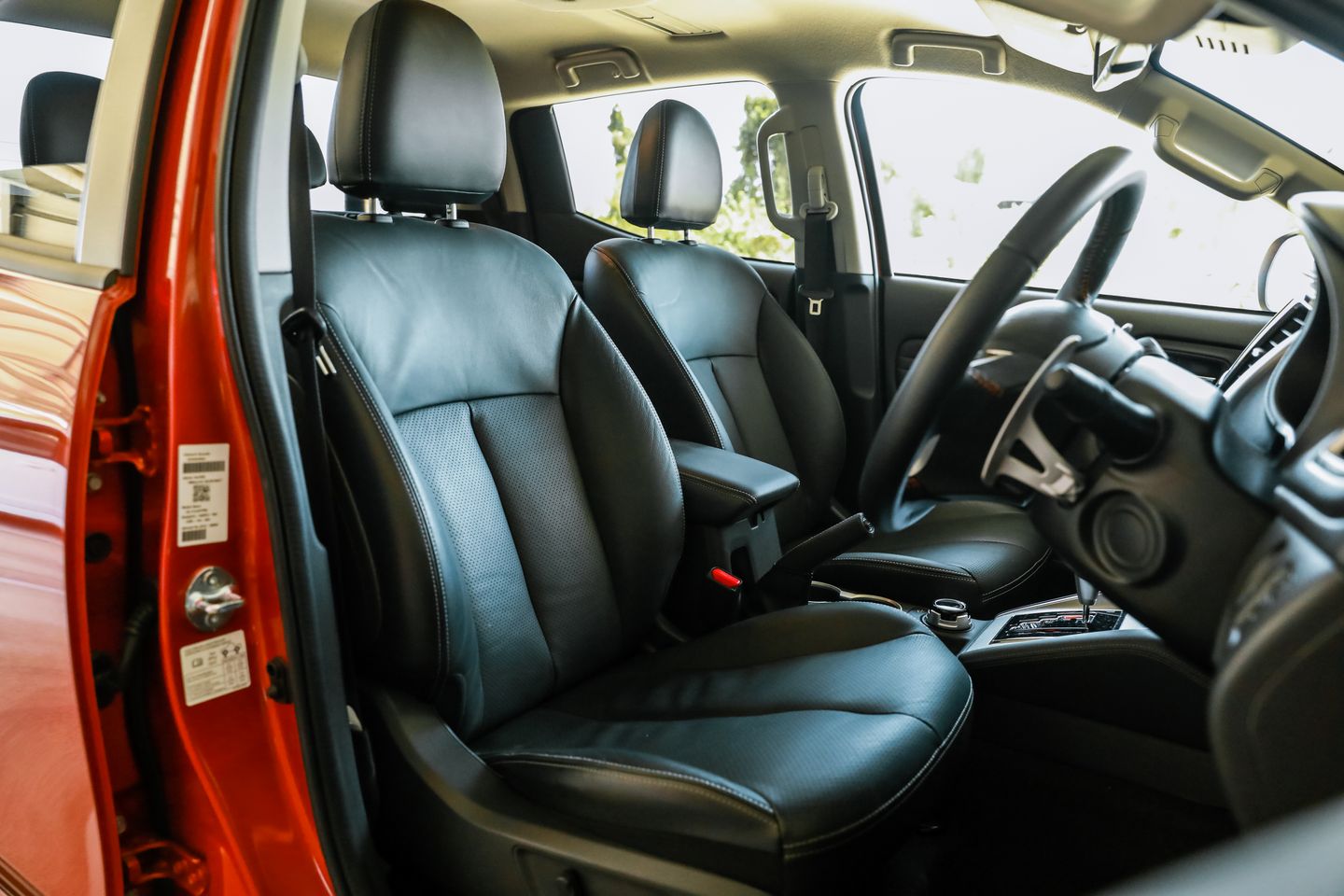
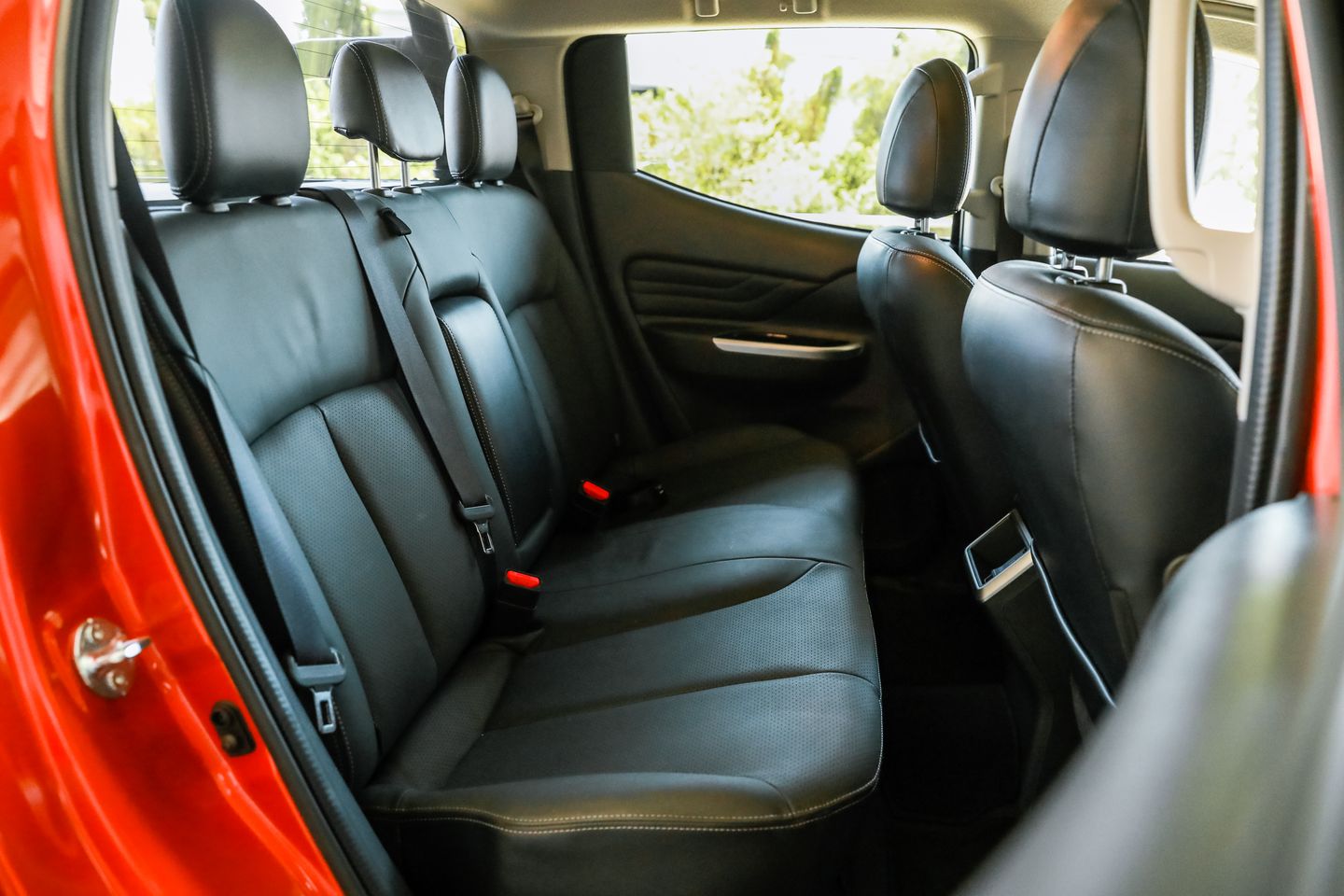
View 6 images
Crash tester ANCAP awarded the Triton five stars in 2015 with a score of 36.22 out of 37 against older criteria.
It has seven airbags including side curtains for both rows, two ISOFIX and top-tether child seat attachment points, child door and window locks, and a long list of driver-assist features including:
This last system kills the throttle if, for instance, you engage Drive instead of Reverse near a forward obstacle. Some jokingly call this an elderly driver assistance function.
In rear-wheel drive form, the 2022 Mitsubishi Triton diesel consumes 7.8L/100km on the combined cycle in Single Cab with a manual transmission and 8.3L/100km with an automatic.
In Double Cab auto guise, it uses 8.4L/100km.
With four-wheel drive, the Mitsubishi Triton diesel consumes 7.9L/100km on the combined cycle with a manual transmission and 8.6L/100km with an automatic.
The base Mitsubishi Triton GLX, with the 2.4-litre petrol engine, consumes 11.4L/100km.
All Tritons have a 75L fuel tank.
| Mitsubishi Triton | Fuel Type | Combined |
|---|---|---|
| 2.4L, 6-speed manual, Extended Cab Chassis, Diesel, 4x4 | Diesel | 7.9 L/100km |
| 2.4L, 6-speed auto, Double Cab Utility, Diesel, 4x4 | Diesel | 8.6 L/100km |
| 2.4L, 6-speed manual, Double Cab Chassis, Diesel, 4x4 | Diesel | 7.9 L/100km |
| 2.4L, 5-speed manual, Single Cab Chassis, Petrol, RWD | Unleaded | 11.4 L/100km |
| 2.4L, 6-speed manual, Single Cab Chassis, Diesel, 4x4 | Diesel | 7.9 L/100km |
| 2.4L, 6-speed auto, Double Cab Chassis, Diesel, 4x4 | Diesel | 8.6 L/100km |
| 2.4L, 6-speed manual, Single Cab Chassis, Diesel, RWD | Diesel | 7.8 L/100km |
| 2.4L, 6-speed auto, Single Cab Chassis, Diesel, RWD | Diesel | 8.3 L/100km |
| 2.4L, 6-speed auto, Extended Cab Chassis, Diesel, 4x4 | Diesel | 8.6 L/100km |
| 2.4L, 6-speed auto, Double Cab Utility, Diesel, RWD | Diesel | 8.4 L/100km |
| 2.4L, 6-speed auto, Single Cab Chassis, Diesel, 4x4 | Diesel | 8.6 L/100km |
What are the running and servicing costs of a Mitsubishi Triton?
Mitsubishi’s standard warranty covers five years or 100,000km, but so long as you return to one of its dealerships at each service this extends to 10 years or 200,000km.
Servicing at dealerships also lets you take advantage of Mitsubishi’s 10 years of capped-price servicing. Maintenance in the Triton is required every 12 months or 15,000km – whichever comes first.
10 years of servicing will set you back $6090 using the capped-price service plan.
Our expert take on Mitsubishi Triton drivability.
The engine is refined and quiet by class standards, with the body and steering wheel at idle largely free of vibration.
While it’s down on power and torque compared to a few competitors it’s worth nothing the Triton is lighter – at 1990kg, it weighs 220kg less than a Ranger and 55kg less than a HiLux.
It pulls along fine albeit gruffly under a heavy throttle, and sits happily at 110km/h at about 1800rpm in sixth, quietly enough to make phone calls without necessitating a loud voice.
It uses leaf springs at the rear like most pickups – Nissan Navara aside – and like most the body jiggles and the ride pogos a little when unladen, while corrugations are felt in your hands through the hydraulically assisted steering.
It’s not as composed as a Ranger or as sharp-handling as the almost SUV-like Amarok, but it’s also far from a class outlier. Indeed, the steering is nicely weighted and consistent, and the Triton’s relative lightness makes it feel almost nimble at times.
The maximum payload is 910kg, which is 81kg less than the Ranger’s and 45kg less than a HiLux’s. Its gross combination mass of 5885kg means that at maximum payload you can still legally tow anything up to 2985kg.
If there’s one obvious potential shortcoming it’s the particularly long rear overhang. For instance the Triton is only 77mm shorter than a Ranger overall yet 220mm shorter between the wheels. This potentially makes it a smidgen trickier to balance loads and gives it a large departure angle when off-roading.
On the upside, this three-metre wheelbase gives the Triton a smaller-than-average 11.8m turning circle, which is particularly useful in urban conditions or navigating a cluttered building site, but also has useful applications on tight trails.
What colours are available for the Mitsubishi Triton
The Triton GLX is available in the following colours:
The GLX-R gains a Diamond White option.
The range-topping Triton GSR is offered in:
Is this the right car for you? Out experts buy or not guide.
The Triton has two big selling points: its price, and its excellent Super Select four-wheel drive system.
On the price front, it offers almost all the equipment and capability of a range-topping HiLux and Ranger, but has a sticker in the $50,000 price range at the very top end.
Super Select makes the Triton easier to drive on wet roads, by allowing owners to use all-wheel drive on paved roads instead of limiting four-wheel drive to gravel or sand.
The car's compact proportions (relative to the rest of the dual-cab class) make it friendlier to drive in town, too.
The cheapest Mitsubishi Triton is the GLX (4x2) that starts from $22,800.
The most expensive Mitsubishi Triton is the GLX-R (4x2) that starts from $45,200.
The best towing capacity of a Mitsubishi Triton is 3100 kg offered by the following variants: GLX (4x4), GLX+ (4x4), GLX-R (4x4), GLS (4x4), GLS (4x4) SPORT EDITION and GSR (4x4).
The largest Mitsubishi Triton is the GLX-R (4x4) which measures 1815mm wide, 5305mm in length and sits 1795mm tall.
The most powerful Mitsubishi Triton is the GLX-R (4x4) which has 133kW of power from its 2.4L TURBO DIESEL DIR INJ engine.
The {modelTitle} is manufactured in different countries, depending on the variant, then shipped to Australia. The Mitsubishi Triton may be manufactured in .
The heaviest Mitsubishi Triton is the GLX-R (4x4) which weighs 2900 kg (kerb weight).
The Mitsubishi Triton may use different fuel/energy types based on the variant which includes Diesel or Unleaded Petrol.